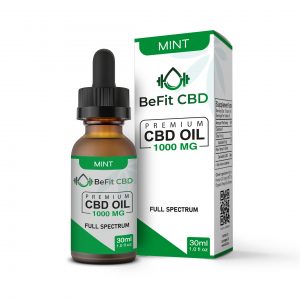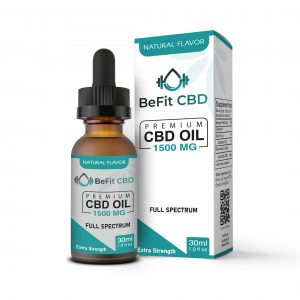What Is CBG?
In the first two installments of this series on the chemistry of cannabis, “CBDA vs. CBD: What Are the Differences?” and “THCA vs. THC: What Are the Differences?,” we explained how all of the cannabinoids present in cannabis are derived from cannabigerolic acid (CBGA).
As the cannabis plant matures, plant enzymes convert CBGA (the acid form of CBG) into a mix of the three major cannabinoid precursors: tetrahydrocannabinolic acid (THCA), cannabidiolic acid (CBDA), and cannabichromene acid (CBCA).
CBG is formed through decarboxylation of the quantities of CBGA not converted into these precursors or any of the other minor cannabinoids.
Due to this process, cannabis strains ordinarily contain very little CBG, often less than 1 percent by weight. To obtain higher yields of CBG in cannabis, specialist plant breeders have begun experimenting with genetic manipulation and crossbreeding.
Leafly reports that scientists have also successfully pinpointed the optimum extraction window for cannabis in order to preserve the highest amounts of CBG, recommending extraction around six weeks into an eight-week flowering cycle.
30:1 CBD:THC
Our 30:1 CBD:THC Rich Formulation is ideal for strong pain relief and mental calmness. Many consumers have found this ratio to be helpful for sleep conditions.
CBG (cannabigerol) is usually found at a concentration of about 1% or less in most cannabis strains. Interest in CBG is starting to grow among health-concerned consumers and the medical community.
CBG is a phytocannabinoid. Unlike THC, neither CBG nor CBD have any psychoactive effects.
CBG is actually one of the first cannabinoids to form in cannabis as the plant develops and matures.
CBG is sometimes referred to as the “stem cell” of all cannabis. It occurs in higher concentrations during the development of hemp plants, usually as CBGA.
Enzymes break down CBGA into THCA, CBDA, and CBCA.
CBG has antipsychotic, antidepressant, and bone-growth stimulating properties.
Researching CBG
Research on CBG provides promising results for numerous therapies. However, since CBG is present as an intermediate with a relatively low concentration in the plant, the therapeutic use of CBG oil may be limited by the small amounts of the compound obtained from cannabis extraction. Fortunately, thanks to the refining culture, we recently managed to obtain cannabis chemotypes where the appropriate enzymes were eliminated, so 100% of phytocannabinoids were expressed as CBG.
Recently, it was found that CBG has antibacterial and antimicrobial properties (including those affecting Staphylococcus aureus); it also exhibits moderate antifungal activity. Numerous studies suggest possible synergistic effects of CBG with terpenoids. Terpenoids work quite powerfully. They show a unique healing effect that can significantly contribute to the so-called synergy effect of hemp-based medicinal extracts. For example, limonene has been shown to interact with CBG and CBD, boosting the apoptosis process, the terpenoids present in cannabigerol.
In turn, linallor, a terpenoid found in lavender, seems to interact with CBD and CBG to treat anxiety. CBC and CBG also exhibited synergistic effects with another terpenoid, a caryophyllene oxide of a natural compound present in lemon balm. This acts as an antifungal as effective as popular drugs that are available. CBGA also has synergistic properties with terpenoids found in lemon balm that acts as an insect repellent, making it a promising alternative for protecting crops and vegetables from insects and parasites.
Limits to CBG Knowledge
We still know very little about the beneficial effects of CBG. It has been confirmed, however, that it occurs in a high concentration primarily in industrial hemp, and the promising research to date means that breeders are looking to increase the amount of CBG in hemp. In fact, CBG is a precursor to three main branches of cannabinoids: tetrahydrocannabinolic acid (THCA), cannabidiolic acid (CBDA), and cannabichromenic acid (CBCA). Each cannabis plant has natural enzymes, called synthases, that CBGA breaks down into one of these three branches. The plant’s synthases (for THC, CBD, and CBC) are named after the cannabinoid that they help create. This process is known to occur through a recessive gene.
CBG Stimulates Neurogenesis
What else does CBG offer? It might slow down the growth of bacteria or even kill them. It is perhaps the only cannabinoid that stimulates neurogenesis, i.e., the formation of nerve cells; it has been classified by researchers as a CB1 receptor antagonist that affects the central nervous system. Therefore, it is believed that CBG partially counteracts the paranoid states sometimes caused by THC. Preliminary studies also show that cannabigerol affects CB2 receptors, but it is not yet known whether CBG promotes or inhibits this receptor.
This sliver of CBG research has sparked hope among those with autoimmune disorders. Further results are needed to confirm and expand on the therapeutic uses of CBG oil.

 FREE SHIPPING ON ALL PRODUCTS
FREE SHIPPING ON ALL PRODUCTS


![What is CBG Oil? 30:1 CBD:THC [That Actually Works]](https://befitcbd.com/wp-content/uploads/2020/07/cbg.jpg)


